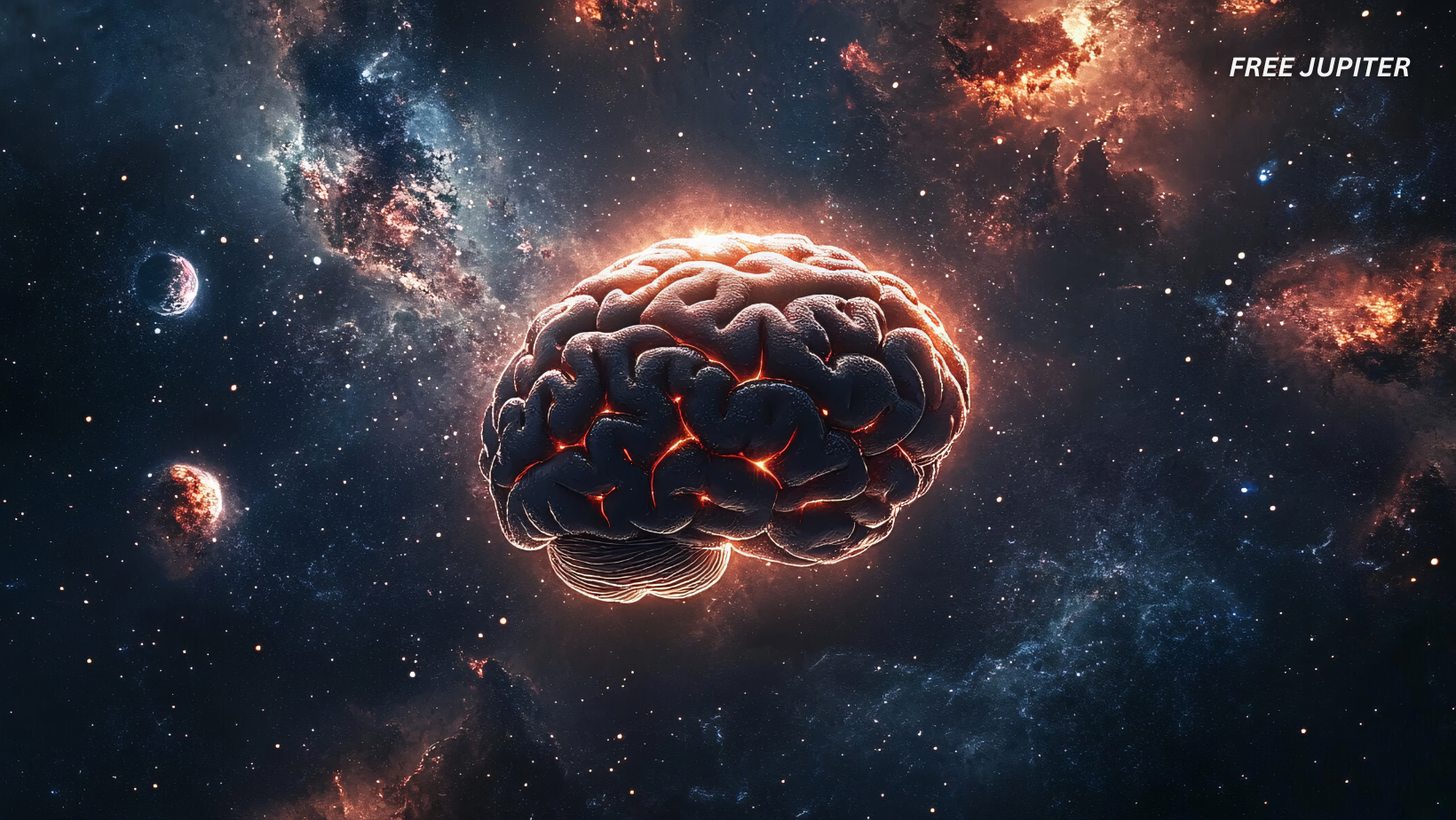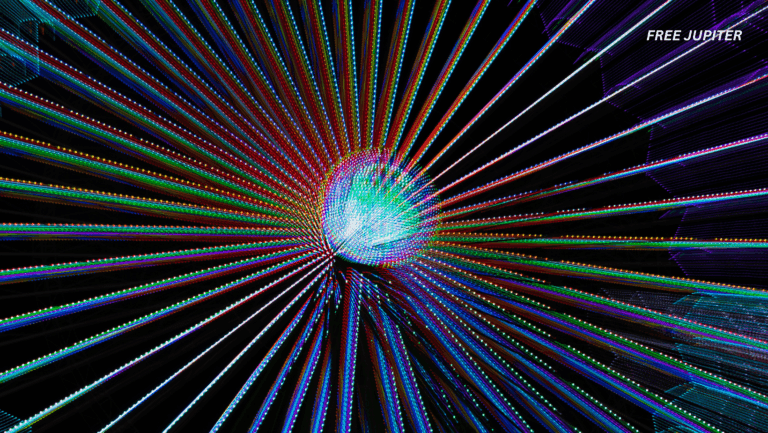Friendly Note: FreeJupiter.com shares general info for curious minds 🌟 Please fact-check all claims—and always check health matters with a professional 💙
At first glance, the idea of your brain working in eleven dimensions might sound like something out of a Marvel movie or a late-night physics documentary. But it turns out, this seemingly wild concept has some serious scientific grounding.
Thanks to a groundbreaking study from the Blue Brain Project, a neuroscience research initiative based in Switzerland, scientists now believe our brains operate on a level of complexity that stretches far beyond what was once thought possible. And yes—it might actually involve dimensions that go well beyond the three (plus time) we typically experience in daily life.
What Was the Blue Brain Project Trying to Do?
The Blue Brain Project, led by neuroscientist Dr. Henry Markram, has one major goal: to create a complete digital replica of the human brain. Think of it as a 3D, fully functioning map of every neuron, every connection, and every brain process—right down to the tiniest electrical signal. If successful, it could change how we approach everything from mental illness and brain injury to artificial intelligence and cognitive enhancement.
As part of their work, the team began examining how neurons (the brain’s information messengers) interact with each other. What they found was not just a dense tangle of connections, as once assumed, but something far more elegant and structured.
Algebraic Topology: The Unexpected Tool Behind the Discovery
Here’s where things get a little abstract—but stay with us.
To make sense of the connections between neurons, the researchers used a branch of mathematics known as algebraic topology. This area of math is all about studying shapes, surfaces, and the spaces between them—not in flat, familiar 3D terms, but in higher dimensions. It’s the kind of math you’d expect theoretical physicists to use when exploring black holes, not biologists examining brain cells.
But this mathematical lens turned out to be perfect for the job. It allowed the team to see patterns in the brain’s wiring that weren’t just random or linear—but multidimensional and shockingly organized.
Neural “Cliques” and Multidimensional Structures
The study revealed that neurons in the brain tend to group together into small, tightly connected units, which the researchers called “cliques.” These cliques don’t just form flat shapes. Instead, they connect in ways that build increasingly complex geometric structures—like lines, triangles, tetrahedrons, and beyond.
Some of these structures were simple, existing in two or three dimensions. But others became so intricate that they appeared to span up to 11 dimensions. That doesn’t mean you could “see” them in space, but mathematically, their behavior fits the patterns you’d expect from shapes in higher dimensions.
In other words, the brain isn’t just firing neurons in a chaotic web. It’s building temporary, dynamic structures that resemble high-dimensional shapes—and then taking them apart again in response to what we see, hear, think, or feel.
Read more: Can Adults Really Grow New Brain Cells? This New Study May Have the Final Answer
The Sandcastle Metaphor: How the Brain Builds and Breaks Shapes
One of the more poetic parts of this study was how the researchers described the process: like building a sandcastle, only to watch it dissolve back into the beach moments later.
Each time the brain processes new information—say, recognizing a face or solving a puzzle—it builds these geometric “sandcastles” of neuron connections. Once the task is done, the castle comes down, and the neurons reshuffle themselves, ready to create something entirely new.
This dynamic construction and deconstruction allows for incredible flexibility and efficiency, helping the brain respond to an ever-changing world in real time. It also helps explain how we can jump between thoughts, shift focus quickly, and adapt to new situations almost instantly.
Echoes in Other Fields: Quantum Physics, AI, and Consciousness
Although this research is rooted in neuroscience, its implications ripple across other areas of science and philosophy. Here’s how:
1. Quantum Brain Theories
Some fringe theories in physics and neuroscience have long speculated that consciousness might involve higher-dimensional processing—possibly even quantum effects. While this new study doesn’t confirm those theories, it lends credibility to the idea that our brain’s architecture isn’t strictly bound to traditional, 3D models.
Could there be a deeper link between brain function and the fabric of space-time? Maybe. But for now, this is at least solid evidence that our brains act like high-dimensional systems—even if they’re not literally portals to other universes (sorry, sci-fi fans).
2. Artificial Intelligence
Most current AI systems operate in relatively simple ways compared to the human brain. They mimic some basic neural patterns but don’t build or collapse complex multidimensional networks on the fly. Understanding how the brain does this could lead to the next generation of AI—machines that think more like humans, with more creativity and flexibility.
Imagine AI that can form temporary abstract thoughts the way our minds do, shifting context fluidly and intuitively. This study might be a stepping stone toward that.
Read more: Your Brain Keeps Working After You Die, According to Science
3. The Puzzle of Consciousness
Philosophers and scientists have long struggled to define consciousness—what it is, how it emerges, and whether it can be measured. Some believe it arises from complex neural activity. If that’s true, then the discovery of multi-dimensional structures could help explain why the brain feels “aware” rather than just being a biological calculator.
Maybe consciousness isn’t just about signals bouncing around, but about the way those signals shape and reshape abstract geometric forms in ways that only a brain can do.
So What’s the Takeaway for the Rest of Us?
Even if you never think about dimensions beyond the third one, this research tells us something amazing: your brain is a living, breathing architect of abstract spaces. Every time you think, remember, feel, or decide, it’s quietly building intricate shapes that collapse and rise again like waves.
And these shapes may hold the secret to how you understand the world—how you string together a sentence, recognize your friend’s voice, or remember the smell of your grandmother’s cooking.
Your thoughts aren’t just firing patterns. They may be 11-dimensional dances your neurons perform in milliseconds.
The Next Frontier: Digital Brains and Beyond
The long-term goal of the Blue Brain Project is to digitally replicate the brain—not just copy its physical structure, but its dimensional thinking patterns as well. This could allow researchers to simulate mental illnesses, test medications safely in a virtual brain, or even explore questions like “What is a thought?” or “What makes something feel real?”
Of course, we’re still far from fully understanding every corner of the brain’s multi-dimensional mindscape. But this study adds a crucial piece to the puzzle—and it invites all of us, scientists and non-scientists alike, to appreciate just how wildly intricate and wonderful our brains really are.
Read more: Things That Adults Bought the Moment They Could—Because Their Parents Never Let Them Have It
Final Thought: Your Brain Is Weirder—and Wiser—Than You Think
It’s easy to take our brains for granted. They hum along in the background, steering our lives without much conscious input. But deep down, something extraordinary is going on.
So the next time you forget where you left your keys or get a song stuck in your head, remember this: your brain is juggling eleven dimensions, sculpting shapes out of pure thought, and performing a level of complexity that no computer or machine has ever matched.
And it does it all while you’re just trying to make coffee.










